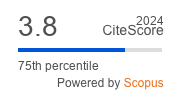Article | Open Access
The Potential of Volunteered Geographic Information (VGI) in Future Transport Systems
| Views: | 6176 | | | Downloads: | 3444 |
Abstract: As transport systems are pushed to the limits in many cities, governments have tried to resolve problems of traffic and congestion by increasing capacity. Miller (2013) contends the need to identify new capabilities (instead of capacity) of the transport infrastructure in order to increase efficiency without extending the physical infrastructure. Kenyon and Lyons (2003) identified integrated traveller information as a facilitator for better transport decisions. Today, with further developments in the use of geographic information systems (GIS) and a greater disposition by the public to provide volunteered geographic information (VGI), the potential of information is not only integrated across modes but also user-generated, real-time and available on smartphones anywhere. This geographic information plays today an important role in sectors such as politics, businesses and entertainment, and presumably this would extend to transport in revealing people’s preferences for mobility and therefore be useful for decision-making. The widespread availability of networks and smartphones offer new opportunities supported by apps and crowdsourcing through social media such as the successful traffic and navigation app Waze, car sharing programmes such as Zipcar, and ride sharing systems such as Uber. This study aims to develop insights into the potential of governments to use voluntary (crowdsourced) geographic information effectively to achieve sustainable mobility. A review of the literature and existing technology informs this article. Further research into this area is identified and presented at the end of the paper.
Keywords: government; sustainable mobility; transport; VGI
Published:
© Maria Attard, Muki Haklay, Cristina Capineri. This is an open access article distributed under the terms of the Creative Commons Attribution 4.0 license (http://creativecommons.org/licenses/by/4.0), which permits any use, distribution, and reproduction of the work without further permission provided the original author(s) and source are credited.


